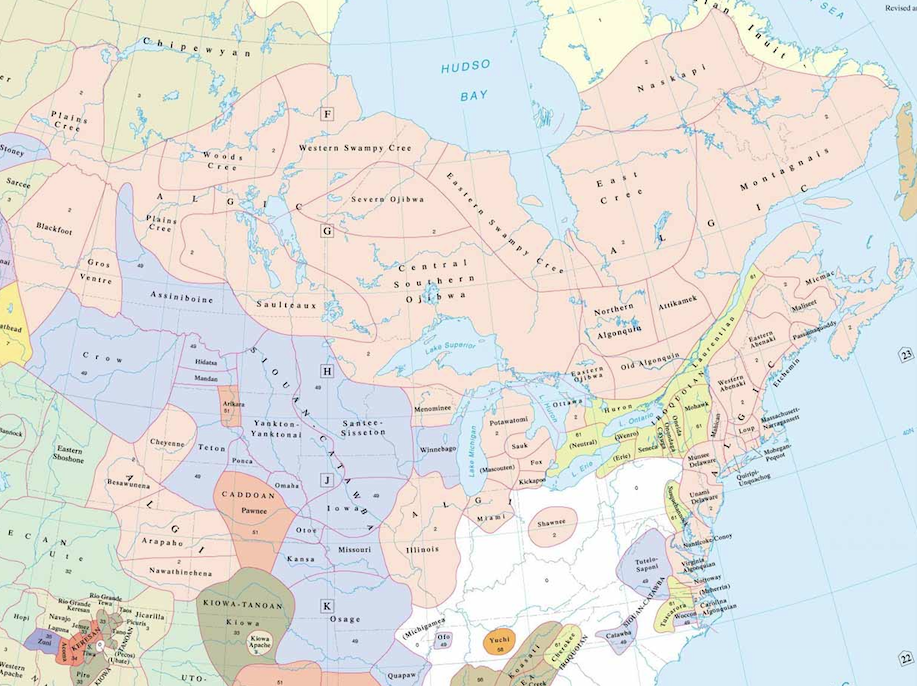| Algonquian |    |

One of the most widespread families in the Americas is Algonquian (which is further part of the Algic family, with two languages in California).
One of the most widespread families in the Americas is Algonquian (which is further part of the Algic family, with two languages in California). |
Here are some examples of cognate words in different branches of the family, along with standard reconstructions.
The Unami verb 'drink' is found in the placename Manayunk, which means "drinking place" (on the Schuylkill River). Note that some of the words in Unami and Ojibwa are from different sources and may not reflect precisely the same dialect or transcription practice. Although Arapaho is clearly more aberrant, some systematic correspondences can be seen with the other languages, including m:b and p:č (which we will examine in more detail next week). |
The Numic branch of Uto-Aztecan occupies the Great Basin of the American West.
|
The Athabaskan family (part of Na-Dené) ranges from Alaska, to the Pacific Coast of Oregon and California, and the American Southwest.
|
These examples cover just languages in California and the Southwest.
|
The Pomoan family occupies a fairly small region of Northern California.
|
We'll look at 5 of the 7 languages.
|
This family (in medium pink) ranges over much of Brazil and adjacent countries.
We'll look at some cognates in a handout, from these languages:
When you are done with the exercise, see these answers. |